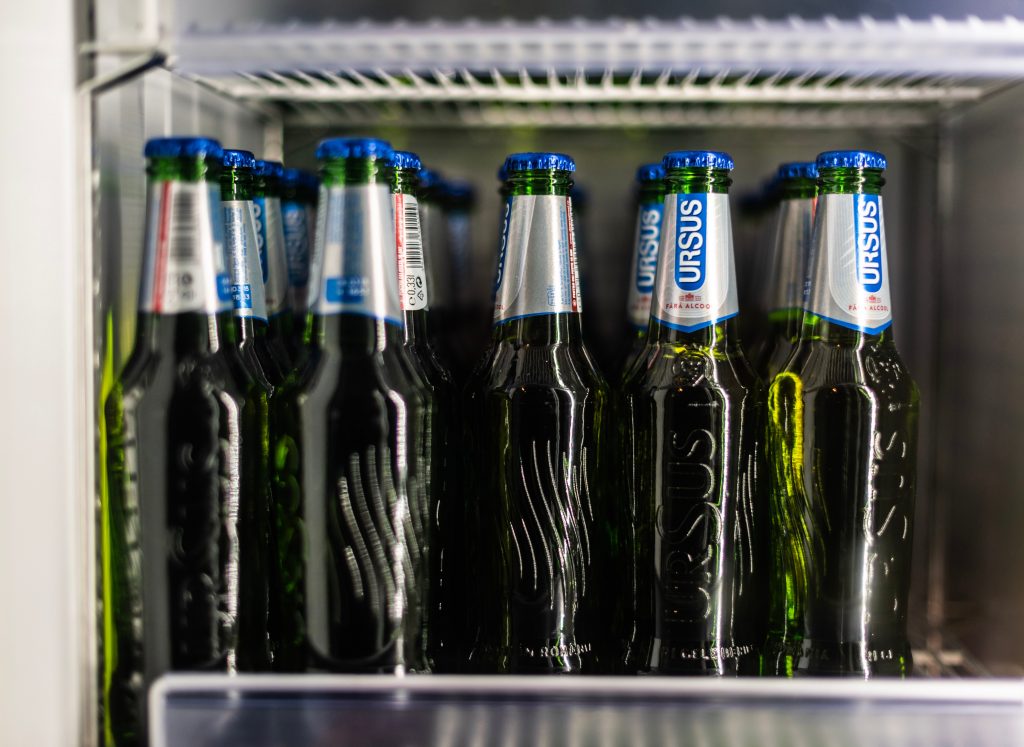This post contains affiliate links which we are compensated for if a purchase is made. Using links costs you nothing and helps to support the ongoing creation of content. Thank you for using them.
Does Homebrew need to be refrigerated? There are often a lot of questions that get asked about the best way to store homebrew. One of the most common is does it need to refrigerate to stop it from going off.
Homebrew does not need to be stored in a refrigerator; it will last for at least 12 months when stored in a cool dark location. However, it is important to ensure that the homebrew is kept in a moderately warm location 68 to 77°F (20 to 25°C) for the first 2 to 4 weeks after bottling. This is important as it allows the secondary fermentation within the bottle to occur which carbonates the beer.
If the homebrew is immediately stored in cool conditions this can result in the yeast going dormant and not convert the priming sugars to carbon dioxide. The speed at which this occurs varies not only on the temperature of the bottle but also on the type of sugar used, click here for more details on the effect of different sugars on carbonation.
Brewing sugar will convert the fastest as it is a monosaccharide which means that it is in a form that yeast can convert to carbon dioxide. Whereas normal table sugar is a disaccharide which means the sugar needs to be broken up into a simpler form first before being converted to sugar which takes a little longer.
The use of carbonation drops will produce the slowest rate of carbonation because they take time to dissolve in the beer and they are usually made of a disaccharide which further slows the process down. If carbonation drops are used keep the beer in warm conditions for at least 4 weeks to ensure the carbonation is complete.
What Is The Best Way To Store Homebrew In The Long Term?
There are several factors that affect the shelf life of homebrew. These factors include the orientation of the bottle, the climatic conditions, the amount of light and storage container that is used.
Orientation Of The Bottle
Beer bottles should always be stored upright rather than laid flat in a wine rack. One of the major reasons for this is it reduces the exposure of the beer to oxygen.
When a beer lies on its side it increases the size of the surface area that is exposed to the headspace within the bottle. Increased surface areas allow more oxygen to absorb into the liquid creating the opportunity for a greater degree of oxidation which will affect the flavor of the beer.
The second significant effect of lying the bottle on its side relates to settling of the sedimentation which largely consists of dead yeast cells. In this orientation, a line of sediment is created on the side of the bottle, from this position the sediment can be more easily incorporated into the beer creating a cloudy appearance. The sediment can affect the flavor of the beer.
Storing the beer upright also ensures greater compaction to the bottom of the bottle which further reduces the chances of the sedimentation being reincorporated into the beer.
Temperature
To maximize the shelf of beer it is best to store it in the coolest conditions possible without allowing the beer to freeze. Freezing beer often results in an expansion inside of the beer bottle and a bursting of the seal, between 39 to 50°F (4 to 10°C) is the ideal temperature.
Reducing the temperature of the beer reduces that the rate of chemical reaction that occurs, this extends the life of the beer. It is common for yeast cells to degrade when exposed to heat for an extended period of time, this degradation will affect the flavor over time.
Fluctuations in the storage temperature of beer should be avoided, though it is generally not a huge problem as long as the peak temperature does not get too high. The ideal location to place beer is in a cellar or under the house.
Light and Storage Containers
The exposure of beer to UV Light significantly affects the quality and flavor of beer over time. UV light can interact with compounds within the beer that are derived from hops and producing a sulphury flavor that is extremely unpleasant. As a result of this effect, it is important to ensure that light is excluded from the beer.
This can be achieved by placing the beer in a dark location or placing the beer bottles in a cardboard carton to shield them from light. The other way to protect the beer from UV light is to use brown or amber beer bottles rather than clear, green, or blue bottles. An article by Monmouth College shows the emission spectra of the different coloured glass under several different light sources. In all cases it show that brown glass absorbed a greater percentage of the energy which greatly reduced the affects of light exposure on the beer. An example of one of the spectra is shown in the image below.

